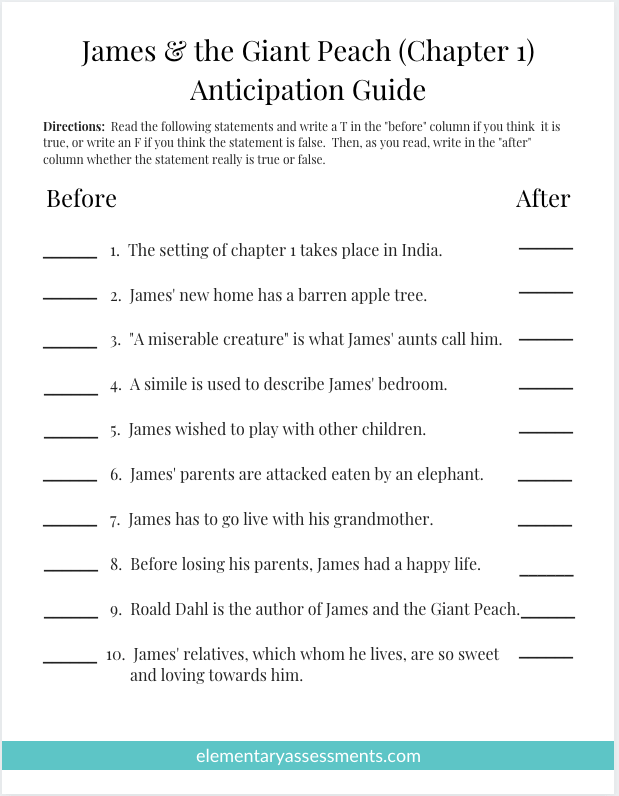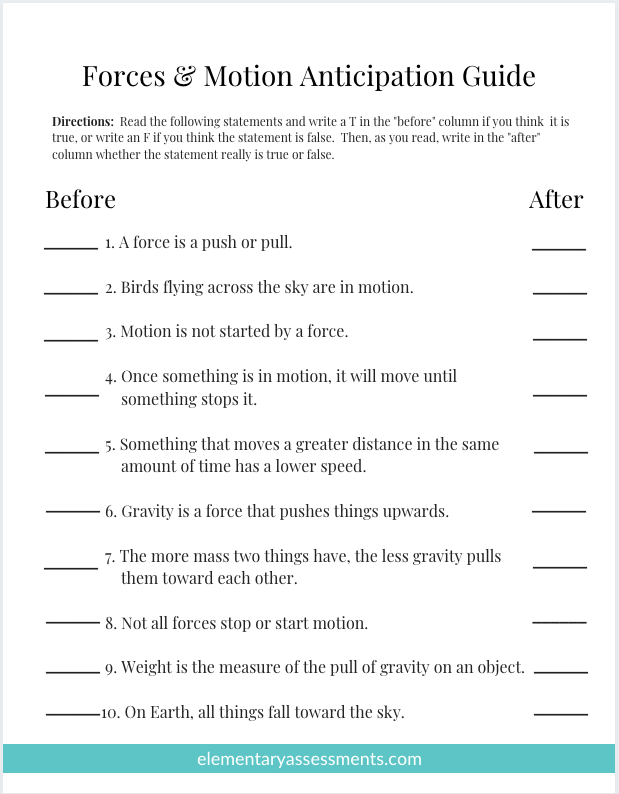You’re thinking of using anticipation guides in your classroom but would first like to see a few good anticipation guide examples.
Anticipation guides activate prior knowledge, prompt a purpose for reading, and motivate even the most reluctant readers to participate fully in literacy discussions.
So it’s understandable why teachers look for examples to help them plan instruction that engages and sparks a love for learning.
This post shares 5 good anticipation guide examples.
After reviewing them, you’ll be able to confidently create your own and use them successfully in your classroom.
Note: In order to download a copy of these examples, you’ll first need to log into your Google Account.
Anticipation Guide Examples
Example #1
For this anticipation guide example, students are learning about quadrilaterals. This example comes from a math textbook.
Ten phrases, based on the text, were created, some false and others true.
Students read the anticipate guide statements, using their prior knowledge to determine if they think the statements are true or not.
Students mark “T” (true) or “F” (false) in the “BEFORE” column indicating their response to each phrase.
Now, as a whole group, in pairs, or individually, students read the textbook selection, periodically stopping as they discover information that helps to confirm or reshape their “BEFORE” statements.
Students mark in the “AFTER” column a “T” or “F”, depending on whether the statements are actually true or false.
Example #2

For this anticipation guide example, students are reading a chapter of James and the Giant Peach.
Students read the statements, and depending on whether they think each is true or false, they mark in the “BEFORE” column a “T or “F”.
Then, as a class, in pairs, or individually, students read the chapter, noting appropriate responses in the “AFTER” column upon discovering new information while reading.
Example #3
In this next social studies example, students are learning about the U.S branches of government.
Students read the statements, noting a “T” or “F” in the “BEFORE” column.
After reading, they’ll revisit the anticipation guide, filling in the “AFTER” section with appropriate responses.

Example #4
Now students are reading about forces and motions.
Again, they fill out the “BEFORE” section based on prior knowledge, then read the selection, and afterward revisit their responses – making changes as needed in the “AFTER” column.

Example #5

This anticipation guide example is based on information from a science texbook.
Students test their prior knowledge by reading the statements and marking a response in the “BEFORE” column.
As a class, individually, or in pairs, they read the text and then you decide if the statements were actually true or false.
They’ll mark their new responses in the “AFTER” column.
Important Tips When Using Anticipation Guides
- When filling out the “BEFORE” section, some students may be anxious about not knowing the correct answers. Encourage them to predict based on their current knowledge. Reinforce the fact that not knowing is okay.
- The part in the activity where students read the text is arguably the most powerful. This is where the magic happens as students actively read, anticipating if they had the correct “BEFORE” responses. Nurture this part.
- As an extension activity, encourage learners to make all the false statements true. Get the template here.
- Consider making your own anticipation guides. Use this editable anticipation guide template. (You must first log into your Google account before accessing.)
Final Thoughts
Now you have a set of anticipation guide examples to reference as you create and use your own.
Anticipation guides not only improve reading comprehension but keep students actively engaged in the lesson by providing a real purpose for reading.
Watch students’ reading comprehension skyrocket!

